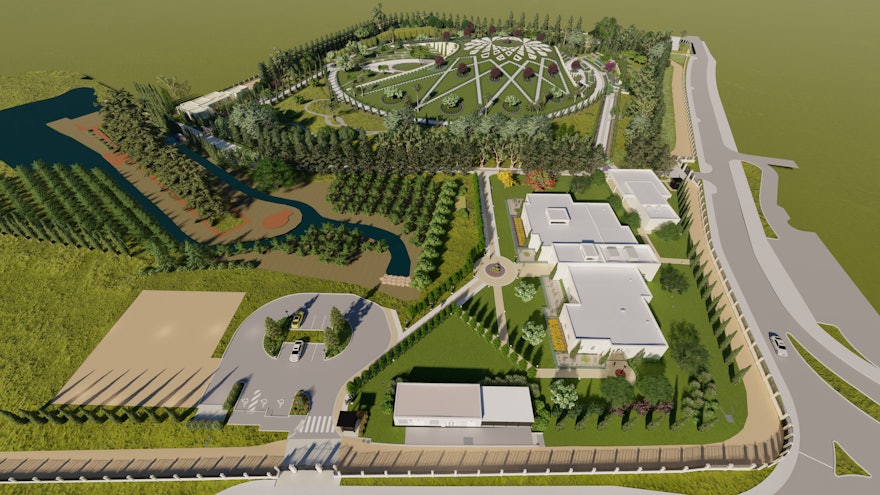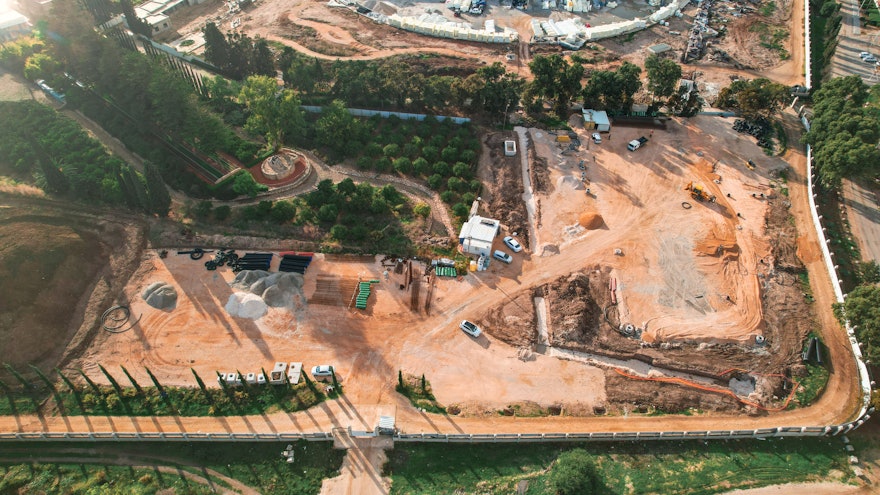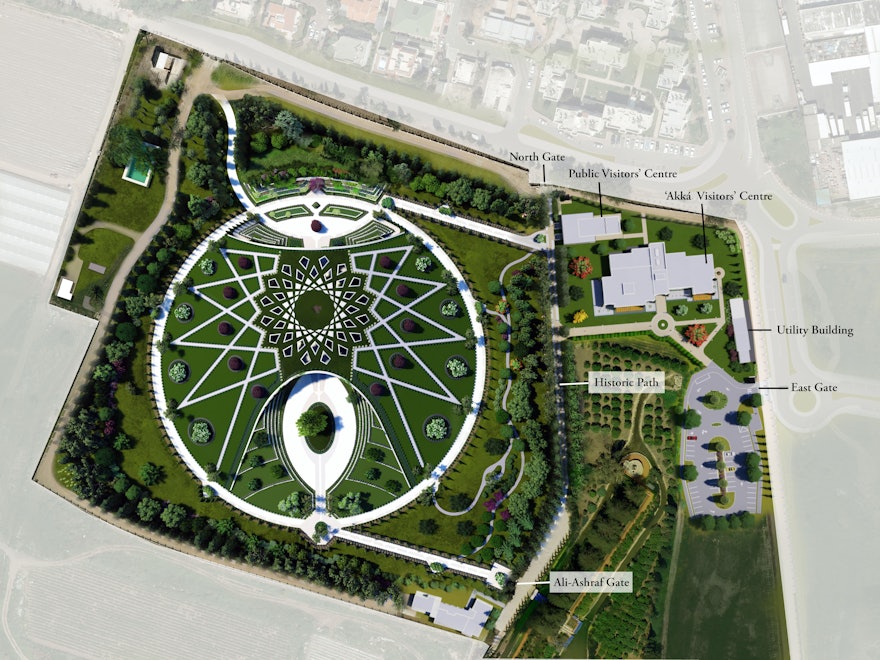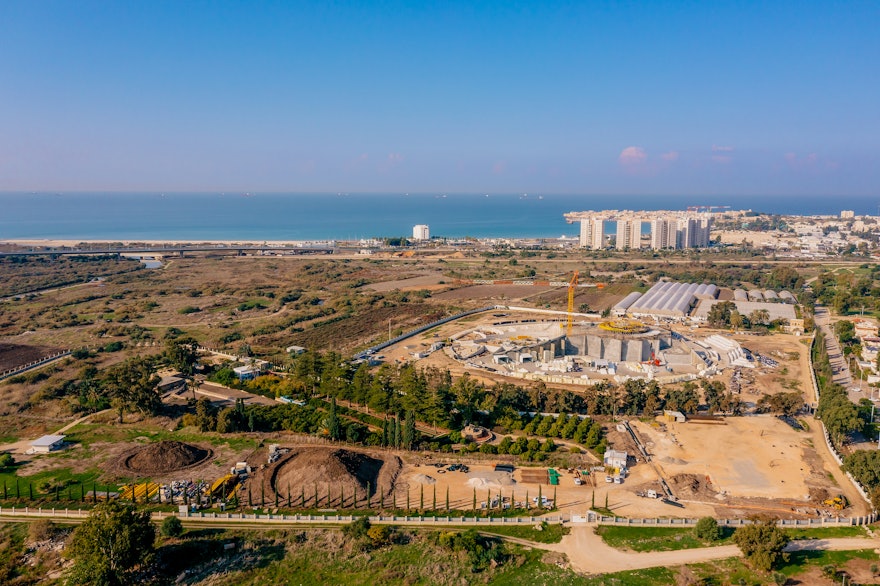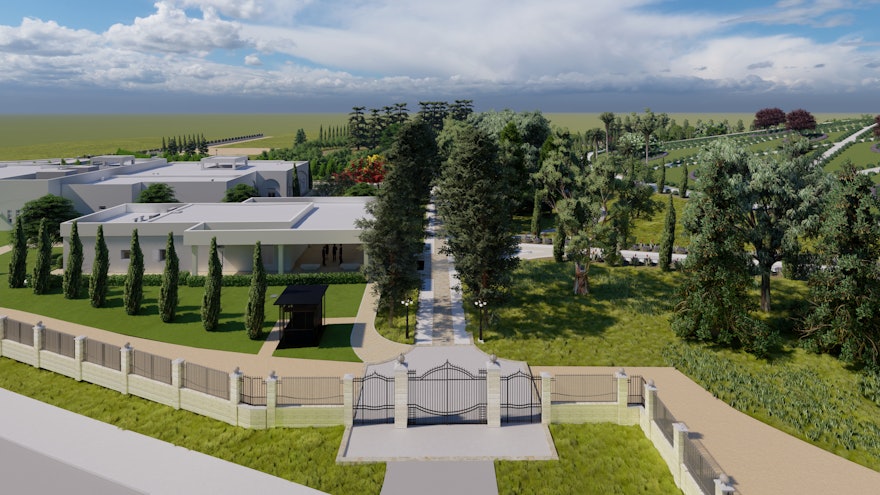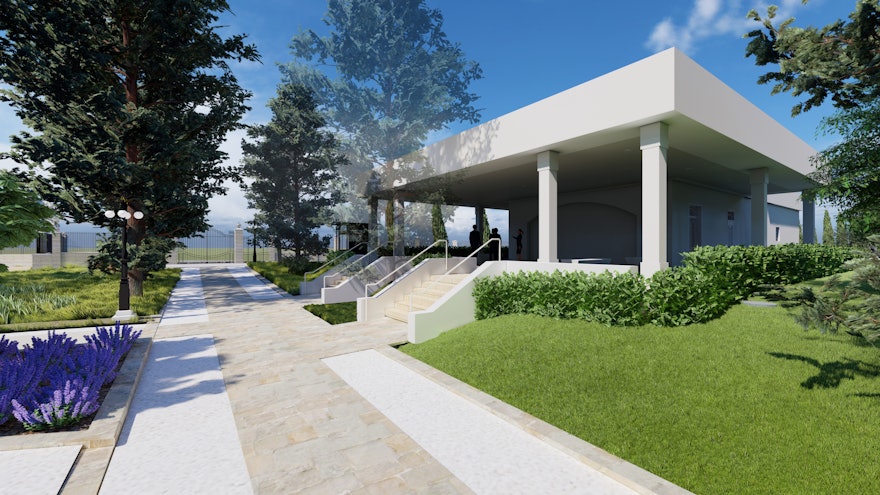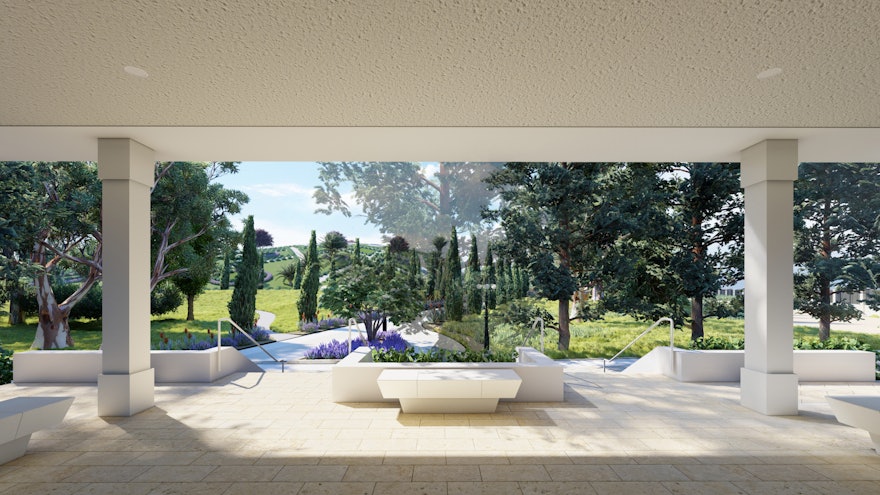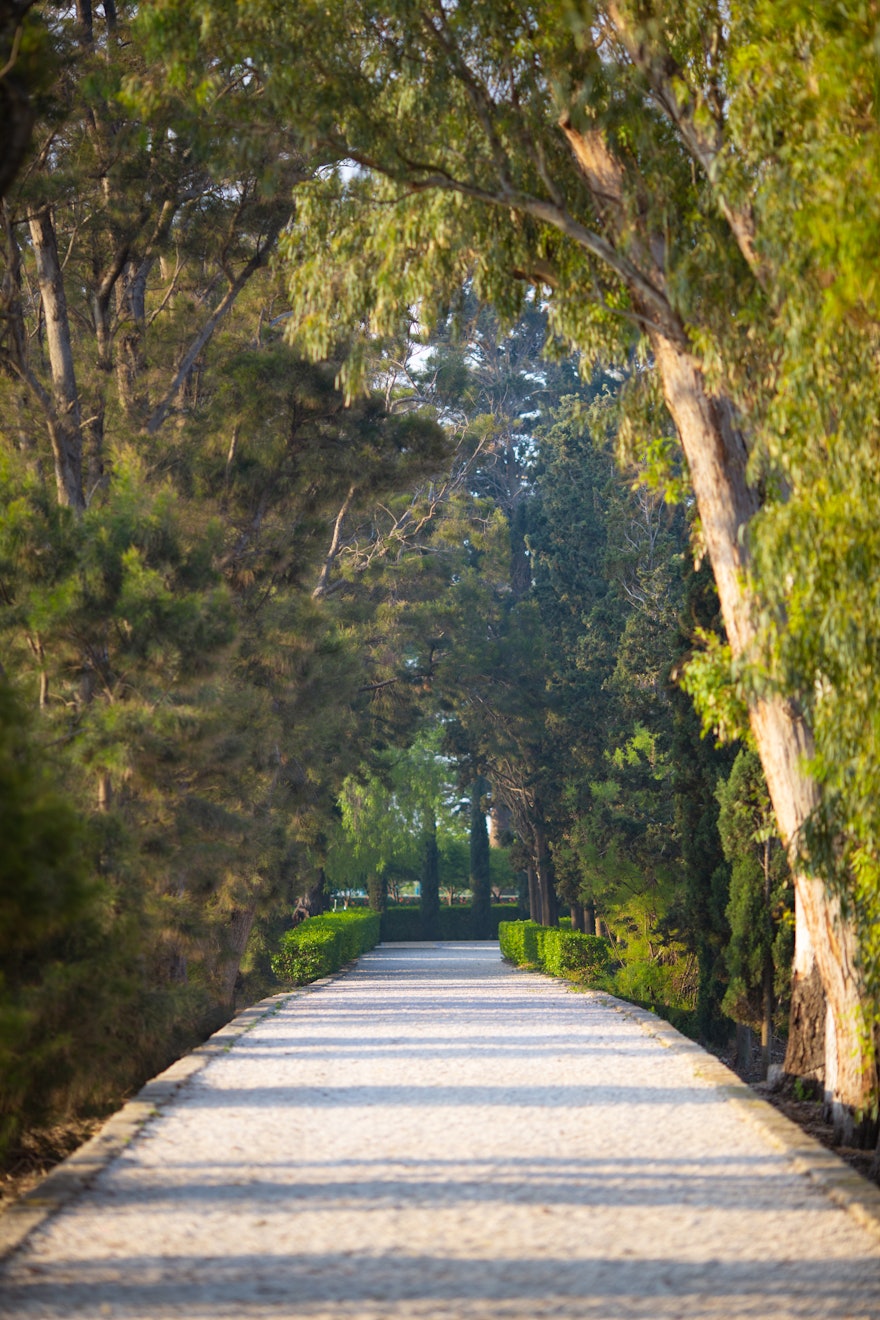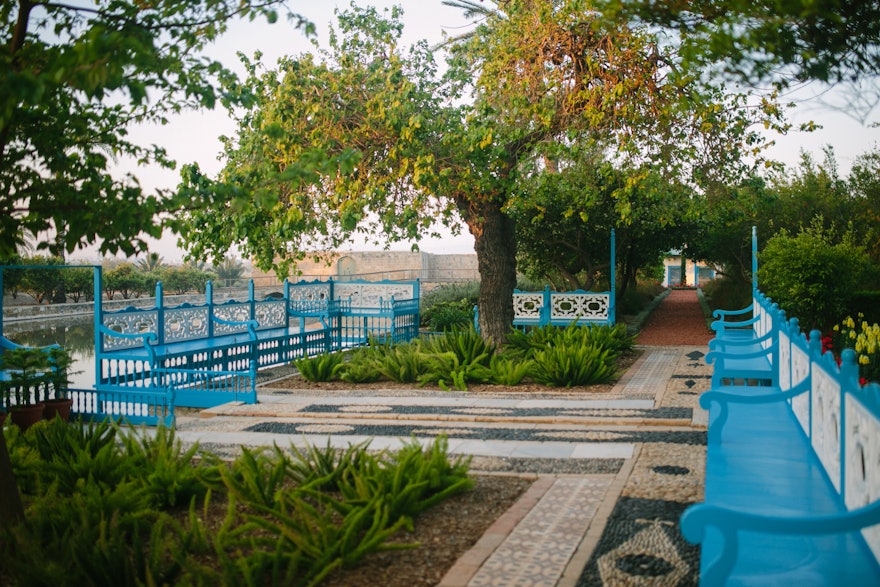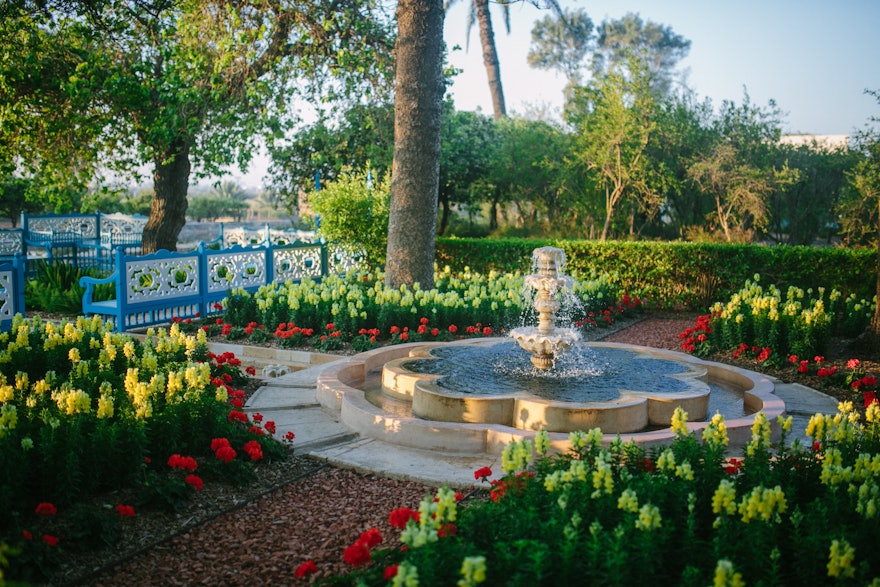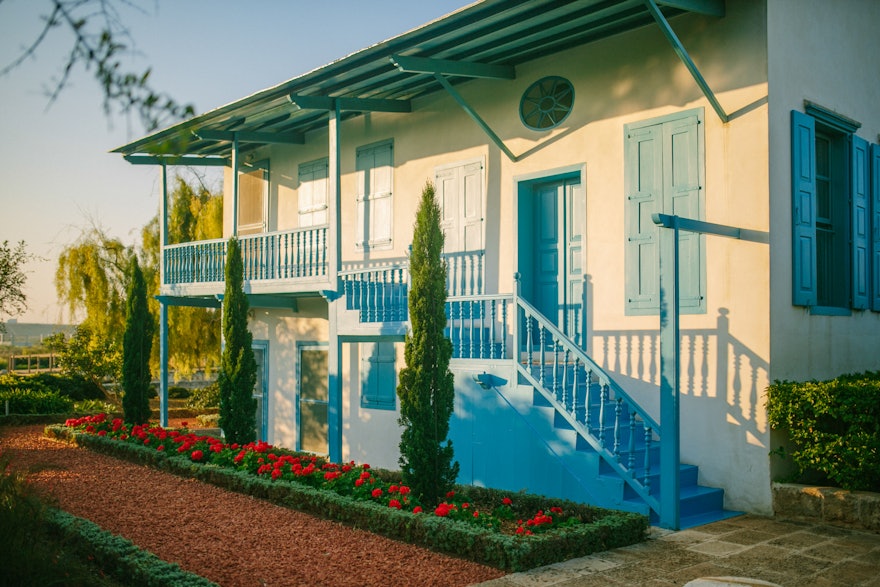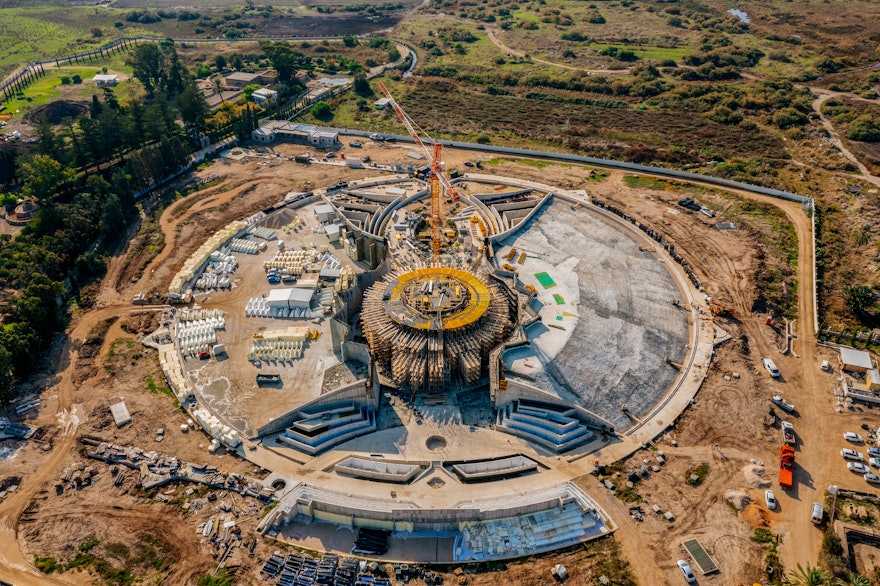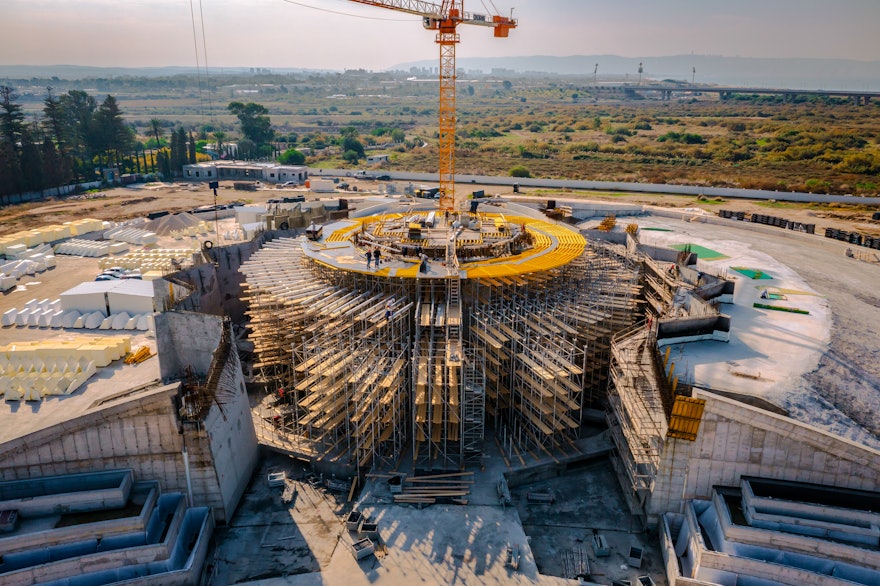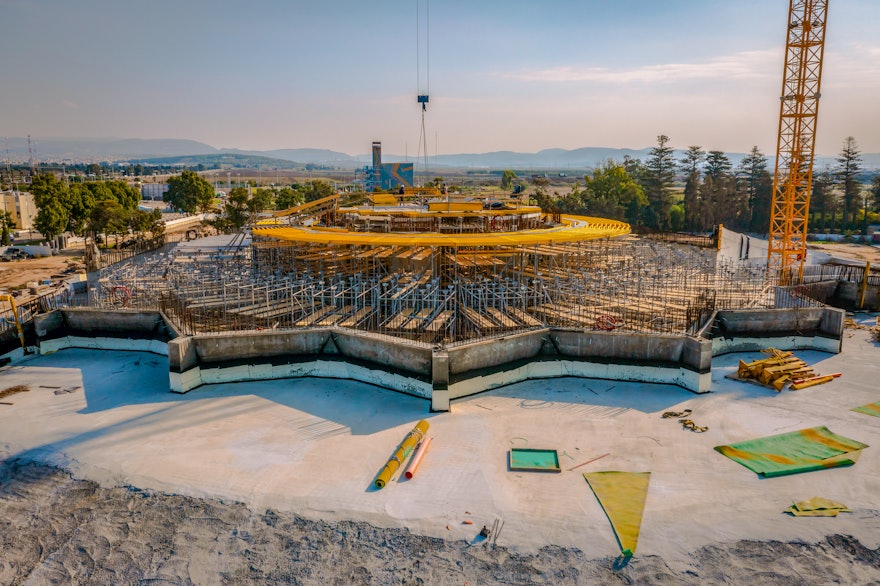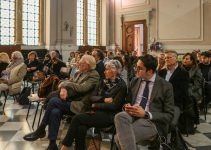BAHÁ’Í WORLD CENTRE — Work has now begun on the ‘Akká Visitors’ Centre, which will welcome pilgrims and visitors to the Shrine of ‘Abdu’l-Bahá and the Riḍván Garden.
When the Shrine is complete, visitors, many of whom travel great distances to express their love and devotion, will arrive at the ‘Akká Visitors’ Centre to prepare themselves to pray and meditate at the final resting place of ‘Abdu’l-Bahá.
The site for the Shrine is in the vicinity of the Riḍván Garden, which was prepared by ‘Abdu’l-Bahá as a place where Bahá’u’lláh could find rest in the final years of a life that was largely spent in exile and incarceration.
The Visitors’ Centre will be located at the northeast corner of the site, directly north of the Riḍván Garden and east of the Shrine of ‘Abdu’l-Bahá. The complex will consist of three buildings: a pilgrim reception centre, which will be the largest of the buildings, a public visitors’ centre, which will be located near the northernmost gate to the site, and a utility building located along the east fence.
The groundwork and infrastructure for the power, water, and drainage, have already been completed, and construction of the piles for the building foundations began earlier this week. The images below show the design renderings and the current state of the site.
(Design rendering) This rendering, looking west, shows the location of the new buildings in relation to the Riḍván Garden and the Shrine of ‘Abdu’l-Bahá. When the project is completed, pilgrims and visitors will enter the grounds through the east gate, where they can visit the ‘Akká Visitor Centre before continuing along the path designed to facilitate stages on a meditative journey toward the Shrine.
The image above shows the groundwork being prepared for the Visitors’ Centre buildings.
(Design rendering) Pilgrims and visitors will proceed from the Visitors’ Centre down the historic path (centre-right) that has existed at least since the time of ‘Abdu’l-Bahá.
As work begins on the foundations for the Visitors’ Centre, construction also continues to move swiftly ahead on the Shrine itself. The old city of ‘Akká can be seen in the background on the right.
(Design rendering) This rendering shows a view from the north gate, with the historic path leading down the center, the east berm of the Shrine on the right, and the ‘Akká Visitors’ Centre on the left.
(Design rendering) The public visitors’ centre, shown in this rendering, is located near the north gate. Guides will brief visitors here, explaining the history and significance of the site.
(Design rendering) Looking west from the public visitors’ building, it will be possible to view the east berm of the Shrine.
The historic path that leads to the Riḍván Garden, and the gate to the Shrine of ‘Abdu’l-Bahá.
In 1875–eight years after Bahá’u’lláh’s incarceration within the prison city of ‘Akká –‘Abdu’l-Bahá created this exquisite garden for His father Who, by then, had suffered more than two decades of imprisonment and exile. Bahá’u’lláh called the garden “Riḍván,” meaning “paradise.”
Bahá’u’lláh also referred to the garden as the “verdant isle.”
When visiting the garden, Bahá’u’lláh would stay in the upper rooms of this building.
Meanwhile, work continues to advance on the Shrine itself, with scaffolding now prepared to facilitate work on the trellis that will span the central plaza.
Source link

